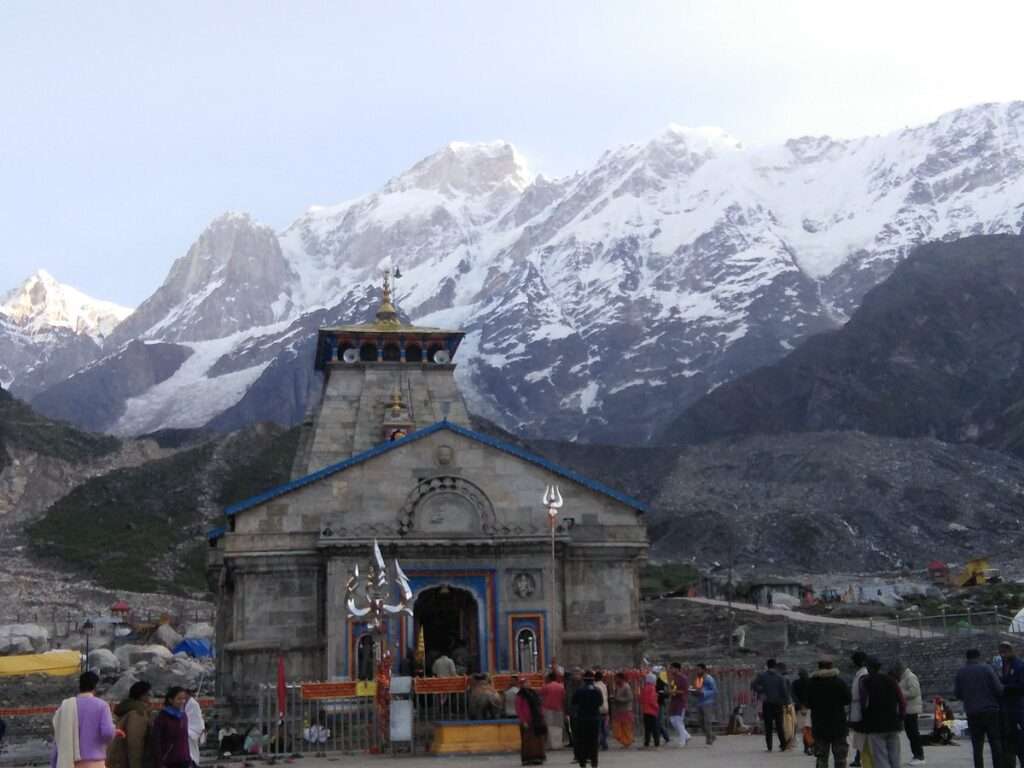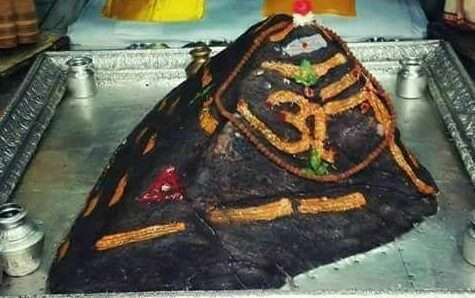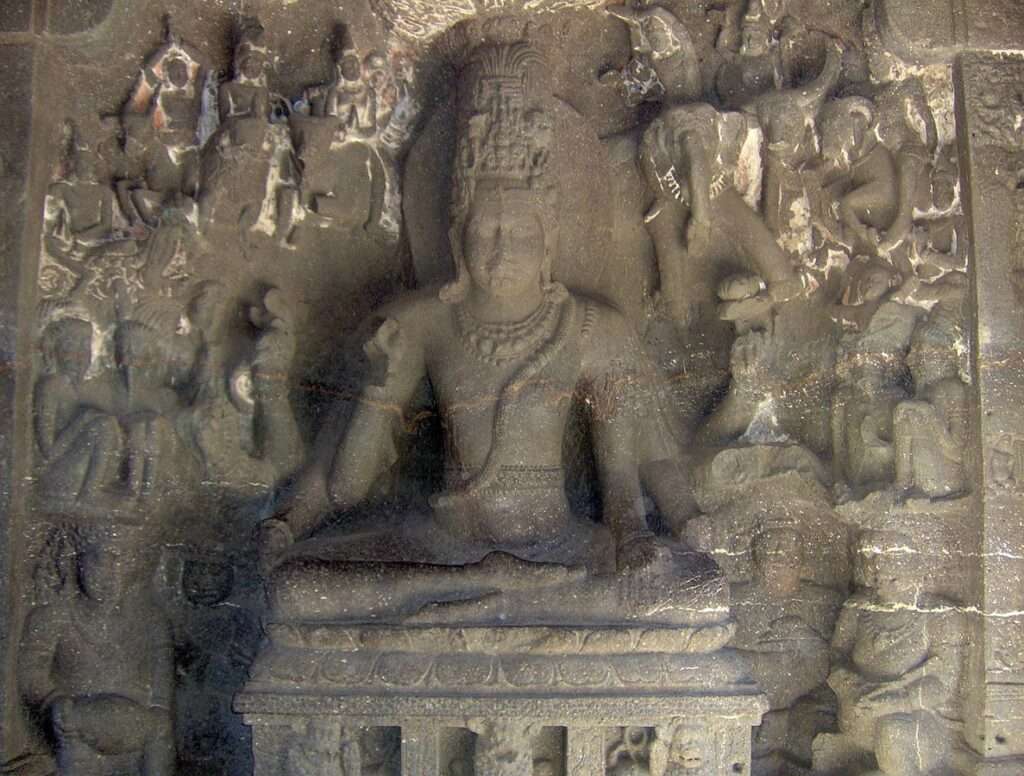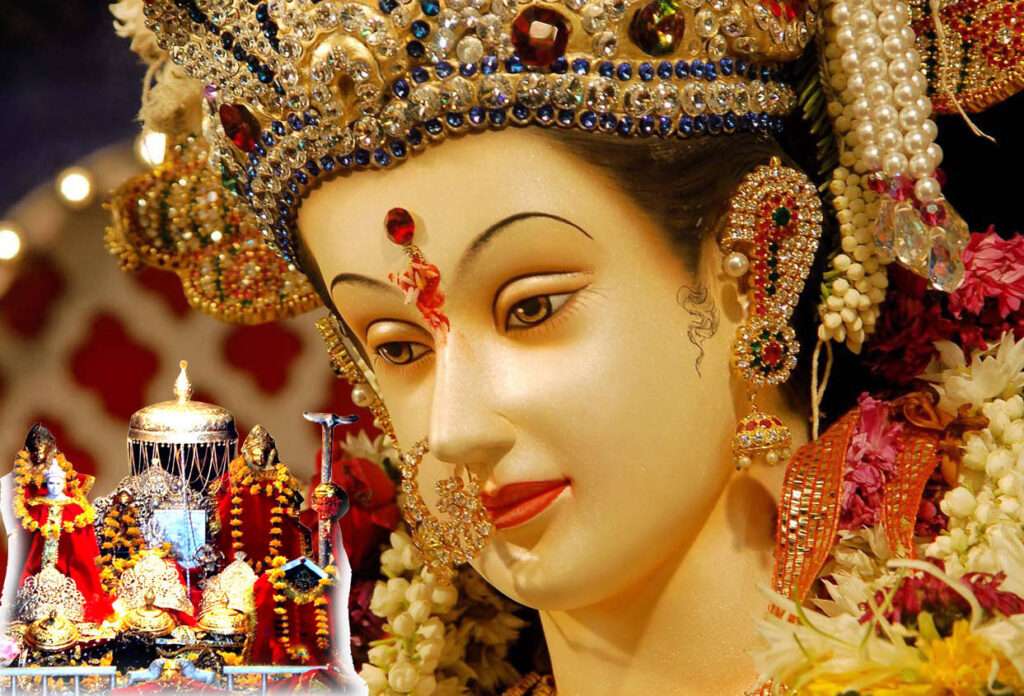Introduction
Kedarnath Temple is one of the most revered Hindu temples in India, dedicated to Lord Shiva, the destroyer and transformer. The temple is located on the Garhwal Himalayan range near the Mandakini river, in the state of Uttarakhand, India. It is one of the twelve Jyotirlingas, the holiest Hindu shrines of Shiva, and one of the four major sites in India’s Chota Char Dham pilgrimage of Northern Himalayas. It is also the first of the Panch Kedar pilgrimage sites, where the five parts of Lord Shiva’s body are worshipped.
In this blog post, we will explore the history, legends, architecture, significance and rituals of Kedarnath Temple. We will also provide some useful information on how to reach, where to stay and what to do in Kedarnath. Finally, we will answer some frequently asked questions about Kedarnath Temple.
Table of Contents
History and Legends of Kedarnath Temple
The origin of Kedarnath Temple is shrouded in mystery and myth. According to one legend, the temple was initially built by the Pandavas, the heroes of the epic Mahabharata, after they had defeated the Kauravas in a bloody war. The Pandavas felt guilty of having killed so many people and sought the blessings of Lord Shiva for redemption. However, Lord Shiva eluded them repeatedly and took refuge at Kedarnath in the form of a bull. The Pandavas followed him and tried to catch him by his tail. The bull dived into the ground, leaving his hump on the surface at Kedarnath. The remaining portions of Lord Shiva appeared at four other places and are worshipped there as his manifestations. The arms of the Lord appeared at Tungnath, the face at Rudranath, the belly at Madmaheshwar and his locks (hair) at Kalpeshwar.
According to another legend, Kedarnath Temple was built by Adi Shankara, a great 8th-century philosopher and reformer of Hinduism. He revived the worship of Lord Shiva and established four monasteries (mathas) in four corners of India. He also visited Kedarnath and installed a lingam (aniconic symbol of Shiva) there. He attained samadhi (liberation) at Kedarnath and his tomb is located behind the temple.
The temple has been renovated and restored several times over the centuries by various kings, devotees and organizations. The current structure dates back to the 18th century and is built of extremely large but evenly shaped grey stone slabs. It has exquisite architecture and a conical rock formation inside the temple is worshipped as Lord Shiva in his “Sadashiva” form.
Architecture and Significance of Kedarnath Temple
Kedarnath Temple is a marvel of ancient engineering and craftsmanship. The temple is built on a rectangular platform that measures 85 feet by 187 feet. The temple walls are 12 feet thick and have intricate carvings of deities, scenes from mythology and inscriptions. The temple has a garbhagriha (sanctum sanctorum) where the lingam of Lord Shiva is enshrined, a mandapa (hall) where devotees can offer prayers and a sabha mandapa (assembly hall) where rituals are performed. The temple has a pyramidal roof that rises to a height of 85 feet and is crowned by a golden kalasha (finial). The temple also has a nandi (bull) statue at the entrance, facing the shrine.
The temple is significant for several reasons. It is one of the twelve Jyotirlingas, which are considered to be the most powerful manifestations of Lord Shiva. It is also one of the four major sites in India’s Chota Char Dham pilgrimage of Northern Himalayas, which are believed to grant salvation to those who visit them. It is also the first of the Panch Kedar pilgrimage sites, which are associated with the legend of Lord Shiva’s bull form. Moreover, it is one of the 275 paadal petra sthalams expounded in the Tevaram, a sacred Tamil Shaivite text written during the 6th and 7th centuries by 63 saints called Nayanars.

Rituals and Festivals of Kedarnath Temple
Kedarnath Temple follows a strict schedule of rituals and ceremonies that are performed by priests belonging to a specific clan called Rawals. The temple opens for the general public only between the months of April (Akshaya Tritiya) and November (Kartik Purnima, the autumn full moon). During the winters, the temple is closed due to extreme weather conditions and the vigraha (deity) of the temple is carried down to Ukhimath to be worshipped for the next six months.
Mahabhishek: This is the first ritual of the day, which starts at 4 am. The idol of Shiva is bathed with water, milk, curd, honey, ghee and other substances. Then it is adorned with clothes, flowers and ornaments. The priest chants mantras and performs aarti (ritual waving of lamps).
Rudrabhishek: This is the second ritual of the day, which starts at 6:30 am. The idol of Shiva is bathed with water mixed with bael leaves, sandalwood paste, vermilion and other ingredients. Then it is offered bilva patra (leaves of wood apple tree), dhatura (thorn apple), bhang (cannabis) and other items that are dear to Shiva. The priest recites the Rudram Chamakam, a hymn from the Yajurveda that praises Shiva.
Shringar Darshan: This is the third ritual of the day, which starts at 8 am. The idol of Shiva is decorated with new clothes, jewels and flowers. The priest performs aarti and distributes prasad (sacred food) to the devotees.
Maha Puja: This is the fourth ritual of the day, which starts at 12 pm. The idol of Shiva is offered various dishes prepared by the temple kitchen. The priest performs aarti and chants mantras.
Sandhya Aarti: This is the fifth ritual of the day, which starts at 6 pm. The idol of Shiva is bathed with water and offered incense, lamps and flowers. The priest performs aarti and sings bhajans (devotional songs).
Shayan Aarti: This is the last ritual of the day, which starts at 7:45 pm. The idol of Shiva is covered with a blanket and offered betel leaves, nuts and fruits. The priest performs aarti and bids farewell to Shiva for the night.
The temple also celebrates various festivals throughout the year, such as Maha Shivaratri, Basant Panchami, Shravan Maas, Janmashtami, Navratri, Dussehra and Diwali. The most important festival of the temple is Kedarnath Mahotsav, which marks the closing of the temple for the winter season. On this day, devotees throng to the temple to witness the final aarti and pooja of the deity and bid farewell to him. The deity is then carried in a palanquin to Ukhimath amid chants and songs.

How to Reach Kedarnath Temple
Kedarnath Temple is not directly accessible by road and has to be reached by a 22 kilometres (14 mi) uphill trek from Gaurikund. Gaurikund is a small town that serves as the base camp for the trek. It has several hotels, guest houses, restaurants and shops that cater to the pilgrims. Gaurikund can be reached by road from various cities in Uttarakhand, such as Rishikesh, Dehradun, Haridwar and Srinagar. The nearest airport to Gaurikund is Jolly Grant Airport in Dehradun, which is about 225 km away. The nearest railway station to Gaurikund is Rishikesh Railway Station, which is about 210 km away.
The trek from Gaurikund to Kedarnath Temple is steep and challenging, but also scenic and rewarding. The trek passes through forests, meadows, waterfalls, bridges and villages. There are several rest points, refreshment stalls and medical facilities along the way. The trek can be completed in 6 to 8 hours on foot or 3 to 4 hours on pony or mule. Alternatively, one can also opt for helicopter service from Phata or Sersi to Kedarnath helipad, which is about 500 metres away from the temple.
Here are the ways to reach Kedarnath Temple from major cities in India:
- By Air: The nearest airport to Kedarnath is Jolly Grant Airport in Dehradun, which is around 238 kilometers away. There are regular flights from Delhi, Mumbai, and other major cities to this airport. Once you reach the airport, you can take a taxi or bus to Gaurikund, which is the base camp for the Kedarnath trek.
[Image of Jolly Grant Airport in Dehradun]
[Image of Gaurikund in India] - By Rail: The nearest railway station to Kedarnath is Rishikesh Railway Station, which is around 216 kilometers away. Trains from major cities like Delhi, Mumbai, and Kolkata stop at this station. Once you reach Rishikesh, you can take a taxi or bus to Gaurikund.
[Image of Rishikesh Railway Station in India] - By Road: Kedarnath is well-connected by road to major cities in Uttarakhand and other parts of India. You can take a bus or a taxi to Gaurikund from Rishikesh, Haridwar, Dehradun, and other nearby cities. From Gaurikund, you will have to trek for about 14 kilometers to reach Kedarnath.
- By helicopter: There are a number of helicopter services that operate between Kedarnath and other major cities in Uttarakhand. This is the most expensive way to travel to Kedarnath, but it is also the fastest.
Here are the approximate travel distances and times from some major cities in India to Kedarnath:
| City | Distance (km) | Travel time (hrs) |
|---|---|---|
| Delhi | 458 | 7 |
| Mumbai | 1,058 | 16 |
| Kolkata | 928 | 14 |
| Chennai | 1,958 | 26 |
| Rishikesh | 216 | 3.5 |
| Dehradun | 238 | 4 |
Please note that the travel time may vary depending on the mode of transport you choose and the weather conditions. It is also important to note that the Kedarnath trek is only open from April to October.
Weather in Kedarnath Temple
The weather in Kedarnath Temple varies greatly depending on the time of year.
- Summer (April to June): The weather is pleasant during the summer, with average temperatures ranging from 15 to 25 degrees Celsius. However, it can get crowded during this time, as it is the peak season for pilgrimage.
[Image of Kedarnath Temple in Summer] - Monsoon (July to September): The monsoon season is wet and humid, with average rainfall of around 1000 mm. The roads leading to Kedarnath can be slippery and dangerous during this time, so it is not advisable to travel to Kedarnath during this season.
[Image of Kedarnath Temple in Monsoon] - Autumn (October to November): The weather is pleasant during the autumn, with average temperatures ranging from 10 to 20 degrees Celsius. The crowds start to thin out during this time, making it a good time to visit Kedarnath.
[Image of Kedarnath Temple in Autumn] - Winter (December to March): The weather is cold and snowy during the winter, with average temperatures ranging from 0 to 10 degrees Celsius. The roads leading to Kedarnath are closed during this time, so it is not possible to visit Kedarnath during this season.
[Image of Kedarnath Temple in Winter]
It is important to dress appropriately for the weather when visiting Kedarnath Temple. During the summer, you should wear light, breathable clothing. During the monsoon, you should wear waterproof clothing. During the autumn and winter, you should wear warm, layered clothing.
It is also important to be aware of the altitude sickness when visiting Kedarnath Temple. Altitude sickness can cause symptoms such as headache, nausea, and vomiting. If you experience any of these symptoms, you should descend to a lower altitude immediately.
Kedarnath Registration
Yes, registration is mandatory for visiting Kedarnath Temple. You can register online or offline.
To register online, you can visit the website of the Shri Kedarnath-Badrinath Temple Committee (SKBTC). You will need to provide your personal details, such as your name, date of birth, and contact information. You will also need to provide your travel details, such as the date of your arrival and departure.
To register offline, you can visit the SKBTC office in Haridwar or Rishikesh. You will need to provide the same information as you would for online registration.
The registration fee is INR 100 per person. The fee is used to help with the maintenance of the temple and the surrounding area.
Once you have registered, you will be given a registration slip. You will need to show this slip to the security personnel at the entrance to the temple.
Here are the steps on how to register for Kedarnath online:
- Go to the SKBTC website.
[Image of SKBTC website] - Click on the “Registration” tab.
- Select “Kedarnath” from the drop-down menu.
- Enter your personal details.
- Enter your travel details.
- Pay the registration fee.
- Print your registration slip.
Here are the steps on how to register for Kedarnath offline:
- Visit the SKBTC office in Haridwar or Rishikesh.
- Provide your personal details.
- Provide your travel details.
- Pay the registration fee.
- Receive your registration slip.
Where to Stay in Kedarnath
Kedarnath town has limited accommodation options for pilgrims. There are some government-run guest houses, ashrams and lodges that offer basic facilities and services. There are also some private hotels and camps that offer more comfort and amenities. However, due to high demand and low supply, it is advisable to book in advance or carry your own tents and sleeping bags. Some of the popular places to stay in Kedarnath are:
GMVN Tourist Rest House: This is a government-run guest house that offers dormitories, double rooms and family suites with attached bathrooms and hot water facility. It also has a restaurant that serves vegetarian food.
Swargarohini Complex: This is a private hotel that offers deluxe rooms with attached bathrooms and hot water facility. It also has a restaurant that serves vegetarian food.
Rudra Meditation Cave: This is a unique accommodation option that offers meditation caves with basic amenities such as bed, lamp, heater and toilet. It also provides meals on request.
Kedar Valley Camps: This is a private campsite that offers Swiss tents with attached bathrooms and hot water facility. It also has a dining area that serves vegetarian food.
Attractions near Kedarnath Temple
Apart from the temple itself, there are many other attractions near Kedarnath that are worth visiting. Some of them are:
Gandhi Sarovar: This is a small lake situated at an altitude of 3,900 m (12,800 ft), about 3 km (1.9 mi) from Kedarnath. It is also known as Chorabari Tal or Chorabari Bamak Glacier Lake. It offers a stunning view of the Himalayan peaks and glaciers. It is said that some ashes of Mahatma Gandhi were immersed here after his assassination.
Vasuki Tal: This is another lake situated at an altitude of 4,150 m (13,620 ft), about 8 km (5 mi) from Kedarnath. It is surrounded by snow-clad mountains and alpine meadows. It is named after Vasuki, the king of serpents, who is said to reside here.
Bhairav Nath Temple: This is a small temple dedicated to Bhairav Nath, an incarnation of Lord Shiva as the protector of Kedarnath. It is located about 500 m (1,600 ft) from Kedarnath Temple on a hilltop. It is believed that Bhairav Nath guards the temple during the winters when it is closed.
FAQ
Q. Why is Kedarnath closed for 6 months
A. Kedarnath is closed for 6 months from November to April due to heavy snowfall. The roads leading to the temple are blocked by snow, and it is not possible to reach the temple safely during this time.
The temple is also closed for a few days during the Hindu month of Shravan (August-September) as the Mandakini River, which flows near the temple, is in spate during this time.
The closure of Kedarnath is a tradition that has been followed for centuries. It is believed that Lord Shiva, the presiding deity of the temple, goes into a state of deep meditation during the winter months.
The closure of Kedarnath is also a safety measure. The roads leading to the temple are very dangerous during the winter months, and there have been several accidents in the past.
The reopening of Kedarnath is a joyous occasion for the pilgrims. It is a time to celebrate the victory of good over evil, as Lord Shiva is believed to have emerged victorious from his battle with the demon Andhakasura during the winter months
Q. What is the best time to visit Kedarnath?
A. The best time to visit Kedarnath is during the months of April to June and September to October, when the weather is pleasant. The temperature during these months ranges from 10 to 25 degrees Celsius.
Kedarnath is closed for 6 months, from November to April, due to heavy snowfall. The roads leading to the temple are blocked by snow, and it is not possible to reach the temple safely during this time.
Here are some of the things to keep in mind when planning your trip to Kedarnath:
- Acclimatize to the altitude: Kedarnath is located at an altitude of 3,584 meters (11,757 feet), and the air can be thin and cold. It is important to acclimatize to the altitude before visiting the temple. This means taking it slow and drinking plenty of fluids.
[Image of Kedarnath Temple at an altitude] - Dress appropriately: The weather in Kedarnath can change quickly, so it is important to dress appropriately. This means wearing layers of clothing that you can easily remove or add as needed.
- Be prepared for the crowds: Kedarnath is a popular pilgrimage site, so it can get crowded during the peak season. Be prepared for the crowds and be patient.
- Take a guide: If you are not familiar with the area, it is a good idea to take a guide. This will help you avoid getting lost and ensure that you have a safe and enjoyable journey.


